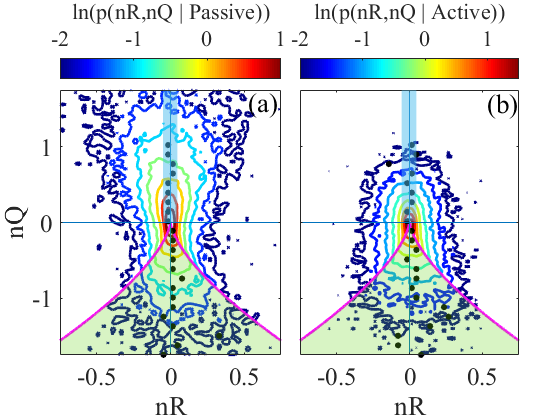MIST
Magnetosphere, Ionosphere and Solar-Terrestrial
Magnetic topology of actively evolving and passively convecting structures in the turbulent solar wind
By Bogdan Hnat (University of Warwick)
Plasma turbulence and magnetic reconnection are fundamental to the transfer of energy and momentum between field and flow and are ubiquitous in laboratory and in space plasmas. Both processes generate coherent structures, which modify the energy transfer between different scales. The precise energy balance depends on the relative prevalence of specific topological structures, their rate of evolution and their ability to carry currents.
Multi-point satellite observations of the high Mach number solar wind offer a unique opportunity to directly probe the properties of the coherent structures inherent in plasma turbulence and reconnection. We use topological invariants, nQ and nR, of the magnetic field gradient tensor to classify the topology of magnetic structures and to quantify the prevalence of actively evolving and passively advective structures and their contribution to Ohmic heating. We established that at least 25% of all samples are passively advected by the solar wind. The passive structures are dominated by plasmoids which carry a significant current density. Actively evolving structures are primarily quasi-2D flux ropes and 3D X-points. Magnetic configurations that actively evolve and carry a significant current, give a lower bound on the fraction of structures that can dissipate and heat the plasma to be ~35% of the total population. These are dominated by quasi-2D flux rope topology. Magnetic X-points constitute ~40% of all evolving structures, but only 1/5 of these carry a significant current.

Figure 1. Conditional joint probability density for (a) force-free magnetic field, passively advecting configurations; (b) actively evolving magnetic structures. Rectangular blue shaded region with nQ>0 corresponds to quasi-2D flux ropes (O-points). Green shaded region, nQ<0 corresponds to hyperbolic 3D X-point magnetic topologies and unshaded regions represent plasmoids. Magenta line separates regions of hyperbolic and elliptic magnetic field lines.
Please see the paper for full details:
Hnat, B., Chapman, S. C., & Watkins, N. W. (2021). Magnetic Topology of Actively Evolving and Passively Convecting Structures in the Turbulent Solar Wind, Phys. Rev. Lett. 126, 125101. https://doi.org/10.1103/PhysRevLett.126.125101